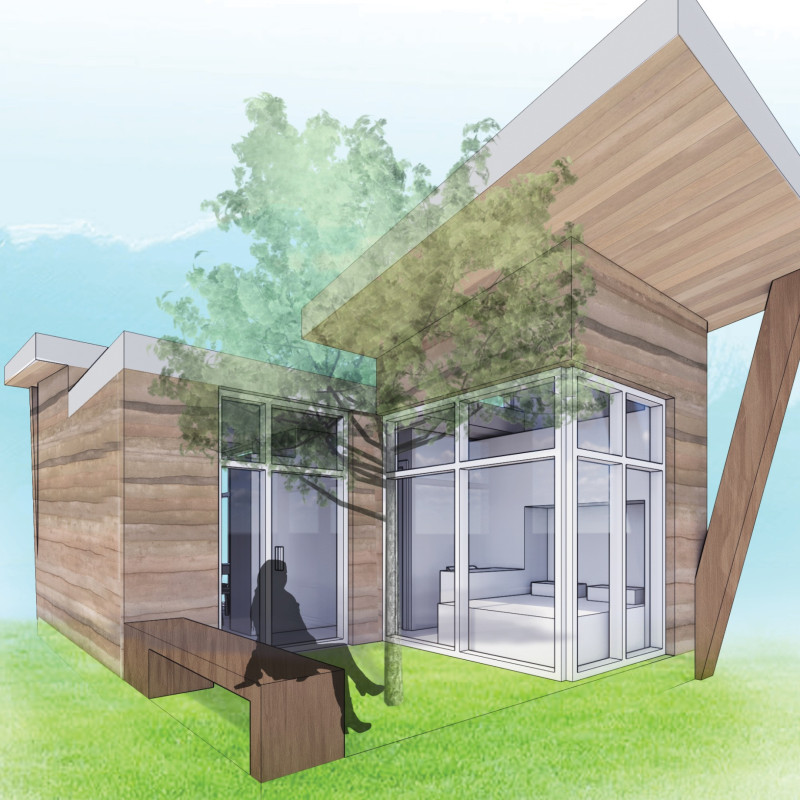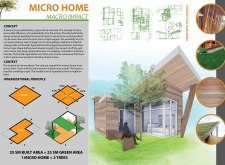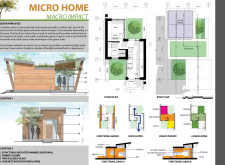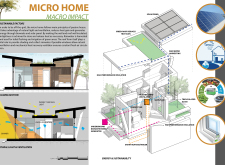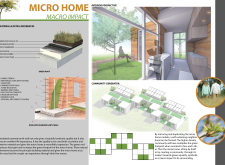5 key facts about this project
The site is carefully chosen, with the building positioned to take advantage of natural light while minimizing the impact on the surrounding landscape. Large windows and open spaces allow for significant daylight penetration, enhancing the interior environment and connecting the inhabitants with the outdoor space. The design promotes an open layout that fosters interaction among users, creating a sense of community within the building itself. This approach underscores the project's commitment to creating spaces that are not just functional but also promote social cohesion.
In terms of functionality, the architectural design accommodates various uses, whether it be residential, commercial, or a mixed-use scenario. This flexibility is evident in the spatial organization, where areas are designed to adapt to different activities throughout the day. The inclusion of versatile spaces ensures that the building can meet the diverse needs of its users, whether for work, leisure, or community gatherings. This adaptability is a critical aspect of modern architecture, allowing buildings to remain relevant and useful over time.
The materiality of the project is significant, with materials selected for both their aesthetic qualities and their sustainable attributes. The use of concrete provides durability and a contemporary feel, while warm wooden accents introduce a natural element that softens the overall appearance. Glass is extensively used, fostering transparency and a connection to the environment, as well as enhancing energy efficiency through passive solar design principles. The careful choice of materials not only elevates the visual appeal of the building but also reflects a commitment to sustainability, as many of the materials are sourced locally or designed with low environmental impact in mind.
Attention to detail is paramount in this project, with architectural elements that reflect precision and thoughtfulness. The façades incorporate a variety of textures and patterns that provide visual interest while also serving functional purposes, such as shading and insulation. Roof overhangs have been designed to protect the building from excessive sun exposure while maintaining visibility and openness. Landscaping around the structure complements the design, integrating green spaces that enhance both the aesthetic and ecological aspects of the site.
Unique design approaches have been employed throughout the project. The incorporation of green roofs and rainwater harvesting systems not only contributes to the sustainability goals but also demonstrates a forward-thinking approach to urban living. These features not only reduce the building’s environmental footprint but also create habitats for local wildlife, promoting biodiversity in the urban landscape.
Moreover, the integration of smart technology within the building enhances user experience and operational efficiency. Automated systems for heating, cooling, and lighting promote energy conservation and user comfort, reflecting contemporary trends in architecture that emphasize sustainability and intelligent design.
In summary, this architectural project stands out due to its thoughtful design that prioritizes community interaction, sustainability, and a deep connection to surroundings. The careful balance of aesthetics and functionality throughout the design ensures that it serves its users effectively while contributing positively to the environment.
To gain deeper insights into this remarkable project, explore the architectural plans, architectural sections, and architectural designs that reveal more about the innovative ideas behind this work. Experience the architectural nuances and details that make this project a notable example of contemporary architecture.


